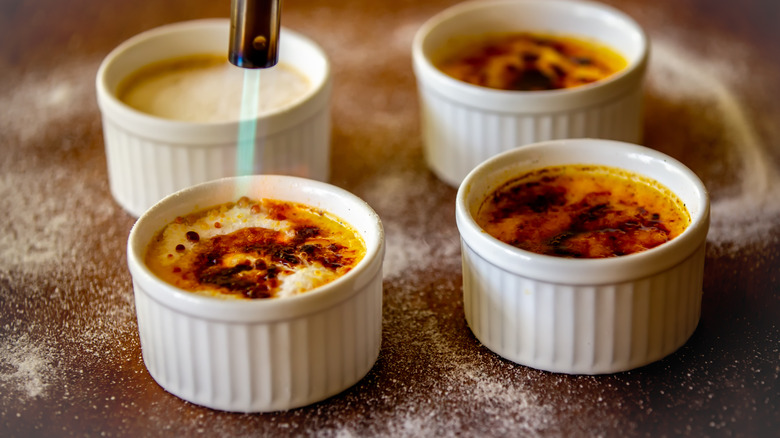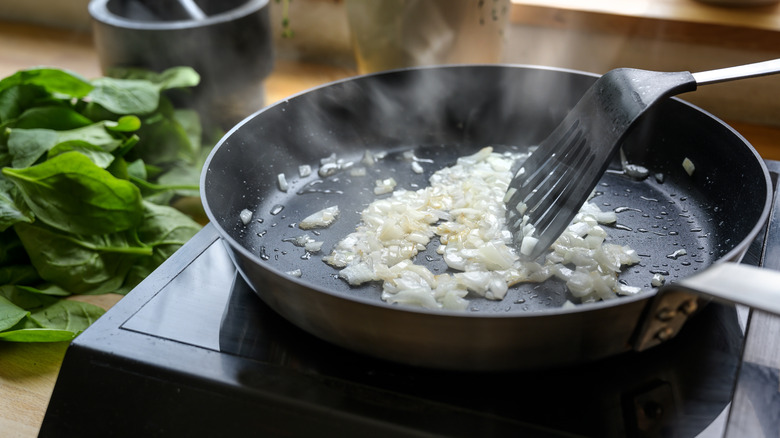Is There A Real Difference Between Browning And Caramelizing?
You may have noticed that certain foods taste vastly different after cooking. Onions, in particular, are typically bitter when eaten raw, but adopt a sweeter taste after cooking, according to Foodiosity. This flavor change is achieved through a cooking process called caramelization.
Although there is some debate over the history of caramelizing onions, one story goes that they were added to burgers to ration meat during the Great Depression, states Cowboys & Indians. Because meat was expensive and scarce in 1926, ribboned onions were added to bulk up the grilled patties at the Hamburger Inn restaurant so diners could fill up faster.
If you've ever been caramelizing onions for your burger while browning the meat, you may have found yourself wondering what the difference between their cooking processes is. Although at first glance they may seem the same, there is an important distinction between how caramelization and browning alter a food's flavor.
There is one chemical difference
Although the two processes appear to be very similar, they actually feature differing chemical reactions, according to Cook's Illustrated. Caramelization refers to when the molecules in sugar begin to break down after most of the food's moisture has evaporated when exposed to high heat. One of the best examples of this is the crunchy crème brûlée topping — once heated, the sugar darkens and hardens, creating a new flavor profile for the dessert. It also occurs with onions, apples, and carrots.
Browning food requires interactions between proteins and amino acids in foods. Once cooked, these compounds also create a new flavor. But unlike caramelization, browning foods occur because of the Maillard reaction — a chemical reaction between amino acids and sugar as they are heated up (via Science of Cooking). This process creates new flavor compounds, adding an additional element of flavor to your food. Browning is commonly used for making toast or roasting meat.
Ultimately, caramelizing and browning foods change their texture and taste, but through different processes. It's a subtle difference, but an important distinction.

